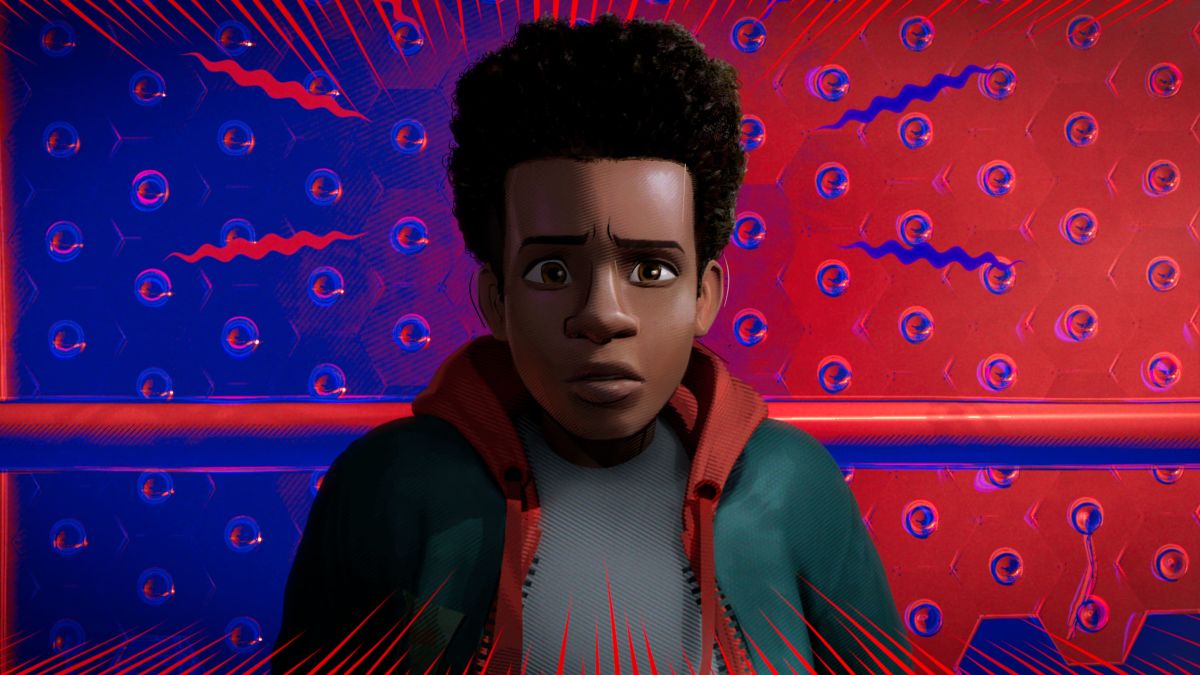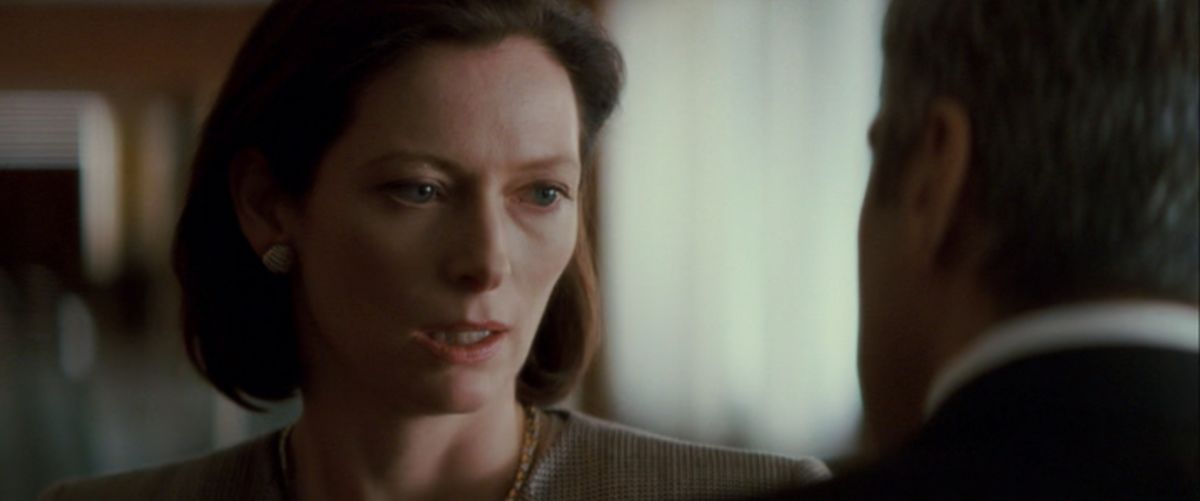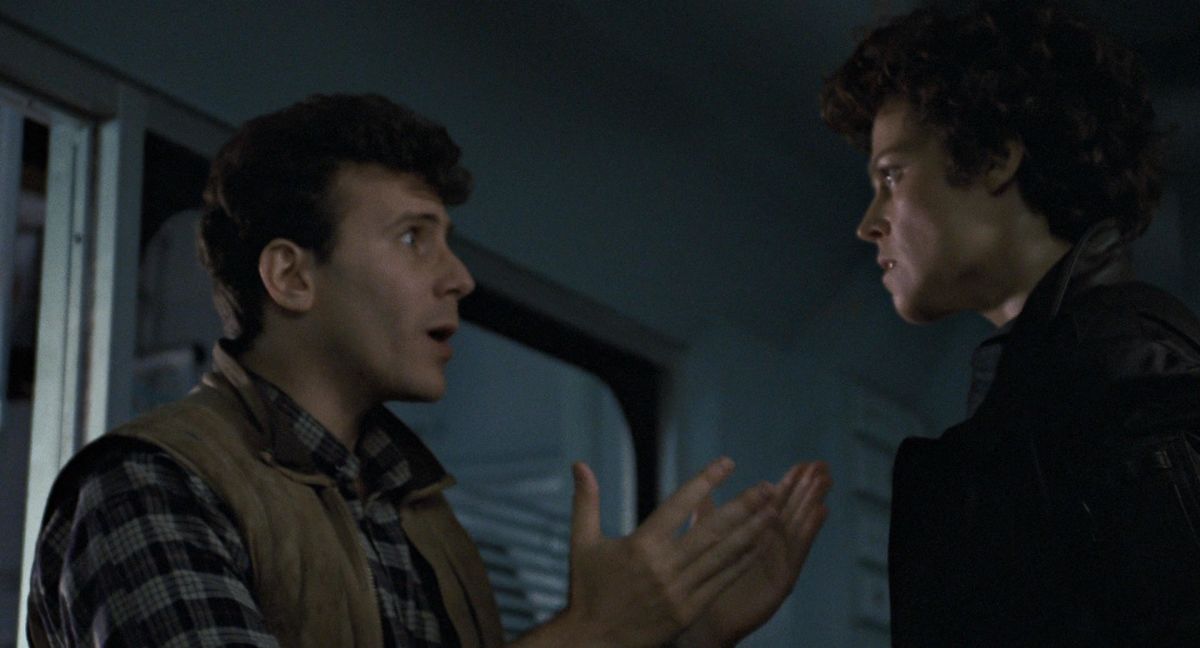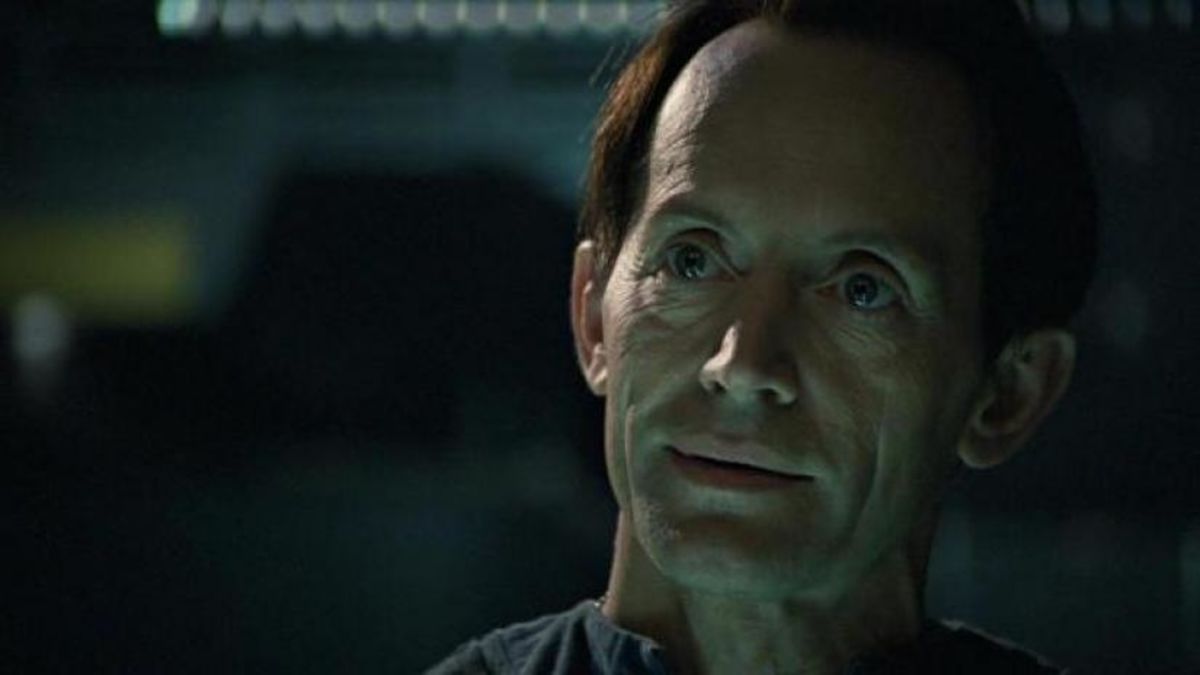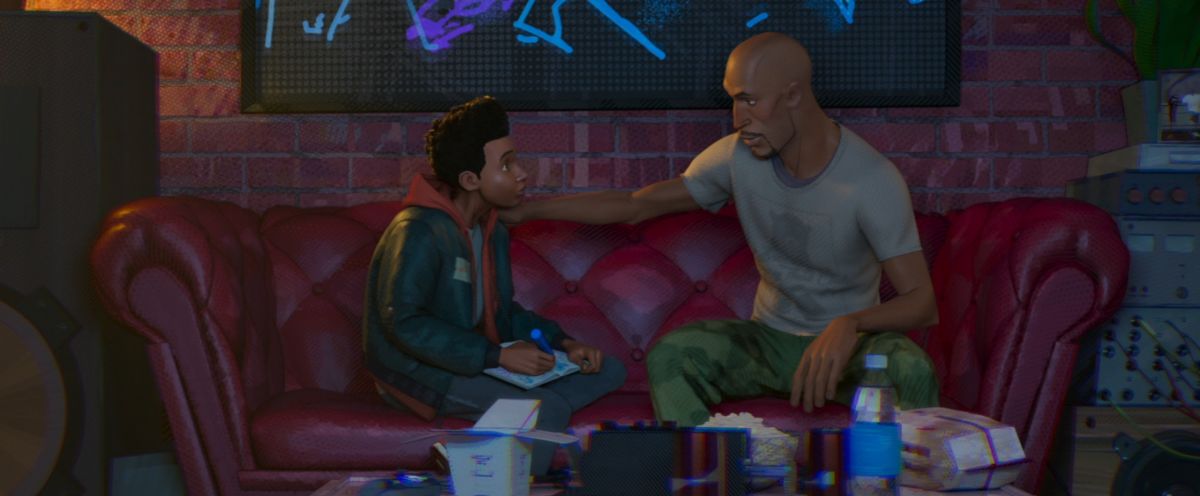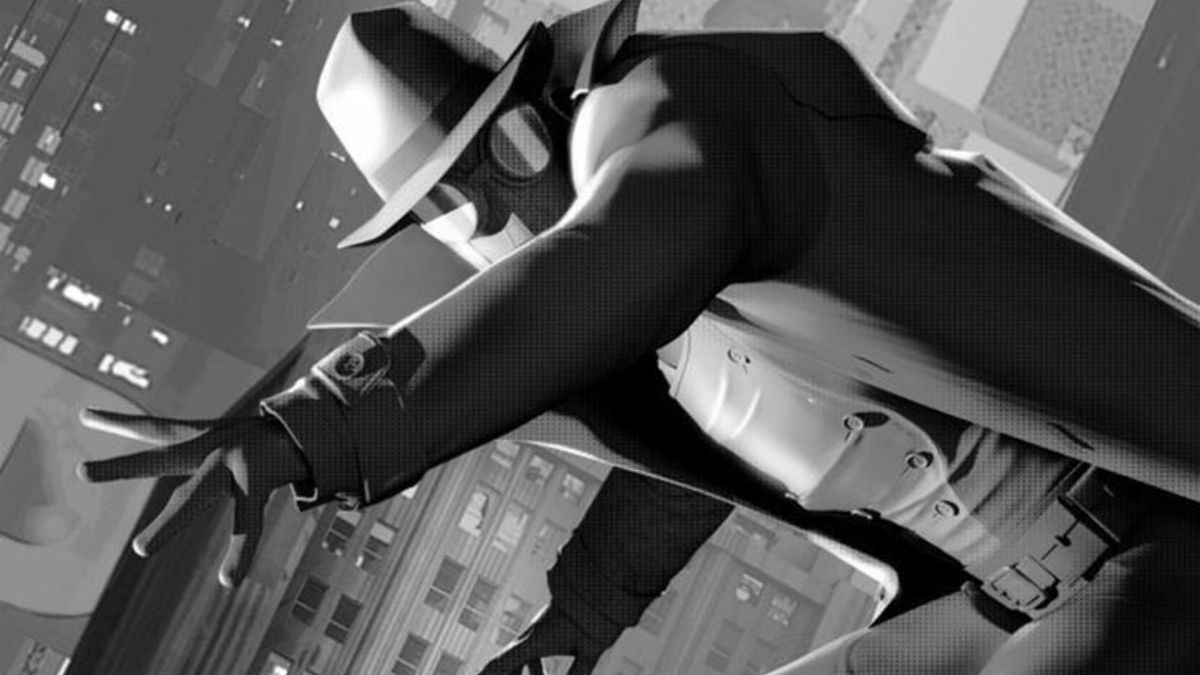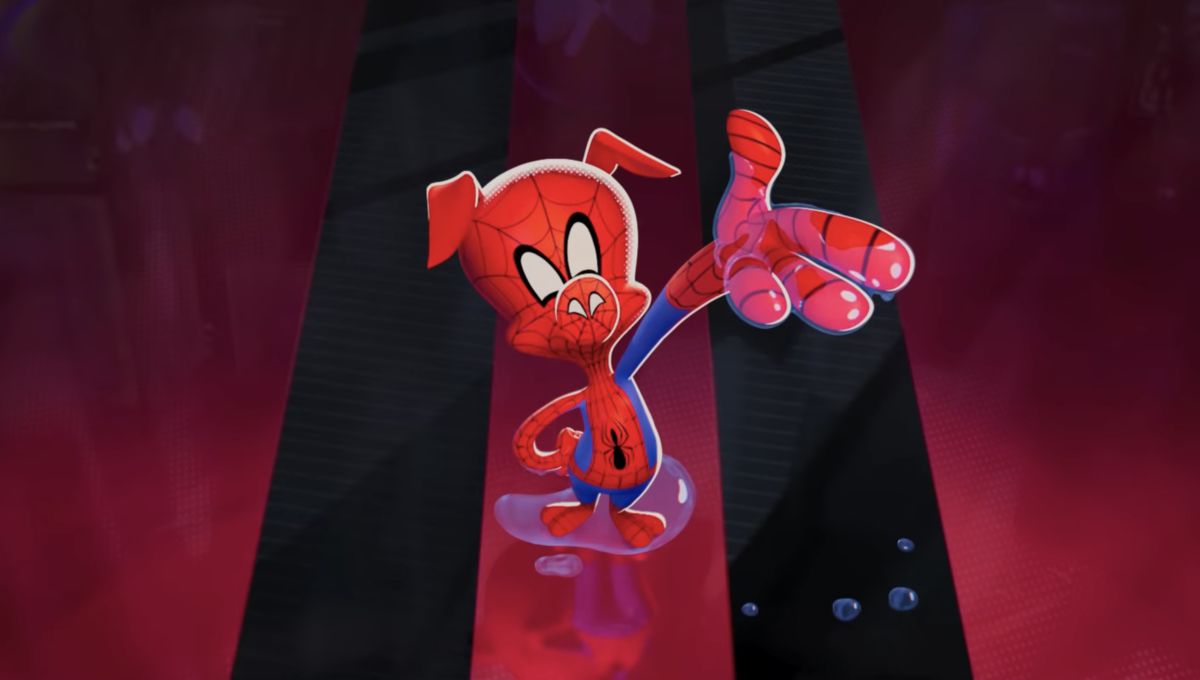
Creating Complex Characters in Complex Times
Moving beyond Archetypes to subtle complexity
Character Archetypes like Protagonist and Antagonist are the building blocks of solid story structure. Those familiar with the Dramatica theory of story also know them as the virtual "training-wheels" of narrative construction. In this series, we dive down into the specifc Character Elements that form Protagonist and Antagonist, and then move out to explore the other Archetypes found in elementary understandings of story.
The Definition of a Protagonist and Antagonist
Something more than simply the good guy or the bad guy of a story.
Spider-Man: Into The Spider-Verse features a cast of characters who defy the law of physics. Tumbling through the air, smashing through walls, and stopping massive machines with the touch of a hand, amazing superheroes save the day and bring conflict to an end. Yet as individualistic and fantastical as they appear on the surface, underneath it all these characters portray various facets of the same human mind.
Multiple "characters"—one single mind.
A Storymind.
The Storymind Concept
The best way to understand the motivations of a character is to stop thinking of him as a real person. Instead, think of all the characters as different motivations of one real person—that person being the story itself.
A complete story, then, is an analogy to a single human mind trying to resolve an inequity. The various characters represent the different considerations and forces that operate within the psyche as the mind evaluates and re-evaluates its approach to resolving conflict.
This Storymind concept is at the heart of the Dramatica theory of story and foundational in the development of Subtxt.
Characters are not real people—they're individual parts of the same person.
Taking this approach ensures a holistic understanding of the forces at work within a narrative.
Protagonist and Antagonist
The dual forces of Protagonist and Antagonist represent the mind’s motivation towards Initiative and Reticence, respectively. The Protagonist pursues; the Antagonist avoids.
In Spider-Verse, Miles Morales is the Protagonist and Kingpin is the Antagonist. Mike pursues, and Kingpin avoids.
At first, the notion that Kingpin avoids anything in this story sounds odd. If anything, Kingpin pursues a course of action to bring back his deceased wife and son.
And that’s when it’s important to realize that these characters are not real people—they’re facets of one single human mind trying to resolve an inequity.
In Spider-Verse, the inequity is a machine that rips a hole in the space-time continuum. The very presence of this machine draws the different Spiders in from alternate universe and threatens to tear open a black hole beneath the city of Brooklyn.
That is the inequity—or Problem—this one Storymind considers, and shares with the Audience.
With that Story Goal in mind, Kingpin’s motivation towards avoidance rings clear. He is motivated to avoid reversing the effects of the Large Hadron Collider. As a “person,” he wants to bring back his family—as a facet of a single mind he avoids or prevents (the active side of avoidance) the successful resolution of the Story Goal.
Just like every functioning Antagonist.
Miles, as Protagonist, pursues that Story Goal.
Breaking Down Archetypal Characters
Miles doesn’t just pursue the Goal, he is also motivated and motivates others to consider the pros and cons of destroying the machine. The guilt trip he lays on Peter B. Parker and his disappearing act in Aunt May’s lab sit as evidence of the Storymind in the act of Consideration.
Kingpin balances this motivation with instances of Reconsideration. His refusal to turn off the machine when danger arises and his hope that his family will somehow reconsider their feelings towards him counteract the simple act of thinking with rethinking.
These collection of paired narrative Elements—Pursuit and Consider, Avoid and Reconsider—signal the presence of Archetypal Characters within the Storymind.
The drive to pursue pairs naturally up with a drive to consider. The motivation to avoid, or prevent, typically matches up with a call for reconsideration.
That’s why the concept of a Protagonist is even a thing in our lexicon of language: we recognize a shared purpose of motivations within a mind, brought them together into a single vessel, or “player,” and then labeled him or her the Protagonist of a story.
The Protagonist isn’t the one who changes the most—the Protagonist is a perfect set of motivations that define a clear and shared drive of initiative in the context of the Story Goal—the current inequity under consideration by the Storymind.
Same with the Antagonist. He or she is not “the bad guy,” but rather, the final alignment of forces analogous to the drive towards reticence in the Storymind.
Characters are not required to follow this alignment in every complete story. In fact, higher interest and increased delight occur when an Author mixes and matches these various narrative Elements.
Miles is your pretty standard Protagonist. And Kingpin is your classic Antagonist.
But what about Peter B. Parker and Miles’ Uncle Aaron?
What facets of the Storymind do they represent?
And more importantly, why do they appear more interesting as characters when compared to the driving forces of Protagonist and Antagonist as described above?
More on that in our next article in this series on Creating Complex Characters in Complex Times.

Understanding the True Motivations of Your Characters
Moving beyond altruism to determine drive.
Many look to notions of good and evil to determine the relative altruism level of their characters' motivations. The "good guys" are the characters we care about, the "bad guys" are not. Subjective appreciations like this will always steer the Author wrong when it comes to developing integrity within their stories. And Audiences flee when you break that trust.
In the previous article The Definition of a Protagonist and Antagonist, the dual forces of initiative and reticence were revealed as key considerations when developing the Protagonist and Antagonist of a complete story.
The Protagonist represents initiative and is comprised of the narrative elements Pursuit and Consider.
The Antagonist signifies reticence and is comprised of Avoid and Reconsider.
These elements were also defined in the context of the Storymind: a complete story is an analogy to a single human mind working to resolve an inequity.
In Spider-Man: Into the Spider-Verse this inequity is the introduction of the Large Hadron Collider, the machine Kingpin hopes will bring back his family. Removing this machine from the current universe will resolve the inequity of the story and bring balance back to the Storymind.
Miles pursues and considers a means to remove this machine.
Kingpin avoids, or prevents, and reconsiders the means to remove the machine.
Miles is the Protagonist and Kingpin is the Antagonist.
Their conflict exists because they represent motivations at cross-purposes to each other within the mind. One for resolution, one against.
Two other Players serve an essential role on both sides of this conflict: Peter B. Parker the “hobo” Spider-Man, and Miles' Uncle Aaron.
At first glance, it may be easy to cast Peter B. Parker (Jake Johnson) the “hobo” Spider-Man on Miles’ side and Uncle Aaron (Mahershala Ali) on the side of Kingpin. After all, Uncle Aaron works for Kingpin and Peter eventually mentors Miles.
But there’s something about both those considerations that don’t quite sit right within the Storymind.
Running Against the Grain of the Expected
While at times Peter seems driven to pursue the same Goal as Miles, he does mess things up at times. Eating cheeseburgers and apologizing to the wrong Mary Jane delays the successful resolution of removing the machine.
Same with Aaron on the other side. As The Prowler, Aaron chases Miles down in the street and destroys Aunt May’s house, but when the moment of truth arrives the "bad guy" can’t finish the job of killing his nephew. Aaron wants something better for the boy and actually gets in the way of Kingpin, making it ultimately more accessible to destroy the machine.
What forces then do Peter and Aaron represent in the Storymind?
And why do they seem so wonderfully complex?
The Forces of Conscience and Temptation
Like the little angels and devils that used to sit on the shoulders of Donald Duck back in the day, the forces of Conscience and Temptation influence and challenge the powers of Initiative and Reticence.
Less “doing the right thing” and more thinking about the consequences, the motivation towards Conscience naturally sits on the side of the Protagonist. Goals do not exist without consequences, and the conscience constantly reminds the Storymind of what could happen if the inequity is not resolved.
Temptation, on the other hand, ignores the consequences. Not as forceful or impactful as the clear-cut motivation towards reticence, temptation disrupts the course of action towards resolution—tempting the mind towards other considerations.
Appreciating these dual forces from the context of a mind seeking to resolve an inequity, it is clear that Conscience helps those efforts while Temptation hampers, or hinders efforts.
The Archetypal Force of Conscience
As with the perfect combination of Pursuit and Consider within the Archetypal Character of the Protagonist, the dual motivations towards Conscience and Help combine to form a different Archetypal Character naturally. The Dramatica theory of story refers to this character as the Guardian. Often portrayed as a helpful teach or kind mentor, the Guardian aids the Protagonist in the successful resolution of the inequity.
Morpheus in The Matrix. The enigmatic S.R. Hadden in Contact. Obi-Wan Kenobi in the original Star Wars. These Guardians act as the voice of Conscience while helping their respective Protagonists resolve the conflict.
The Archetypal Force of Temptation
Death Vader in Star Wars. The charismatic David Drumlin in Contact. Cypher in The Matrix. These troublemakers disrupt the efforts to resolve the conflict by appealing towards the mind to ignore consequences.
They don't stop resolution—they just delay it by getting in the way.
Think of Cypher’s steak dinner or Drumlin’s appeal to Jody Foster’s Ellie to stop wasting her time talking to aliens. These players distract—or Hinder—conflict resolution through Temptation.
Note the balance between Help and Conscience and Hinder and Temptation. Like Pursuit and Consider, Avoid and Reconsider, the Storymind addresses all sides of the argument when in the process of resolving the conflict.
Balance on Both Sides of the Argument
This tendency towards balance within the mind led the creators of the Dramatica theory of story, Melanie Anne Phillips and Chris Huntley, to coin a new name for this Archetypal Character: The Contagonist. One part Temptation, one part Hinder, the Contagonist disrupts efforts towards resolution on both sides of the good guy/bad guy fence.
He doesn't fight for one side or the other because Objective Character Functions couldn't care less about notions of "good" or "evil." An Objective Character Function is objective—it has a function in the story, and it performs that function from beginning to end.
Consider Darth Vader’s Force Choke of Admiral Motti in the first Star Wars. Or the Dark Lord's idea of using a homing beacon onboard the Millennium Falcon, rather than straight capture. These actions and decisions get in the way of the Empire’s clear-cut motivation to prevent a rebellion. Sure, the beacon pays off—but not after a few hapless TIE-Fighter pilots play out their role.
Objectively speaking, Darth is a lone wolf.
The Narrative Elements of a story exist within the context of the Story Goal—not with their “good guy” or “bad guy” affiliation. This is why you find Complex Protagonists and Complex Antagonists in films like Michael Clayton or How to Train Your Dragon.
Karen Crowder (Tilda Swinton), a “bad guy,” pursues a successful resolution of the case against uNorth—in favor of uNorth. Michael Clayton (George Clooney), a “good guy,” prevents that resolution.
Karen is the Protagonist of Michael Clayton. Michael is the Antagonist.
Hiccup (Jay Baruchel), a “good guy,” prevents efforts to train the next generation of dragon killers. His father Stoic (Gerard Butler), as misguided as he is in the eyes of the Author, pursues that successful resolution.
Hiccup is the Antagonist of How to Train Your Dragon. Stoic is the Protagonist.
An Objective Stance
The development of an argument requires the Author to step back and take an objective point-of-view of the play at hand. Who moves forward? Who pulls back? Who gets in the way of resolution, and who helps? Where are the voices of Conscience and Temptation?
Subjective attribution colors and distorts this balanced and considered approach. Notions of good and evil, light and dark, mask the very truth on display. Unable to see a clear picture of the forces at work, the Author breaks the integrity of the argument and loses the Audience’s trust.
There is balance within the mind.
There is balance within the Storymind.
Take this objective perspective of character motivations with the Story Goal the next time you develop a story. The experience will help you gain perspective and balance in your own work.
Building Interest by Embracing the Unexpected
Embracing this approach brings us back around to the discussion surrounding Peter B. Parker and Uncle Aaron. If they both represent alternating halves of the same Archetypal Character, how can you possibly classify their role within a story?
There's no doubt they work within Spider-Man—the scenes involving two are always the most entertaining and the most engaging.
And the reason for that lies in this essence of character that works against the expected perfect alignment of Archetypal Characters.
These two characters approach something much more Complex.
And for that, we refer to them as Complex Characters.

Writing Characters Who Break the Mold
Moving away from the familiar and into the unexpected.
In the previous two articles in this series on Creating Complex Characters in Complex Times, characters were seen not as real people, but rather as analogies to the forces at work in a single mind. Eschewing notions of good and evil, this objective appreciation of story as psychology allows Authors to see the Players in their story for the very first time.
When seen objectively, Archetypal Characters represent forces within the mind. The Protagonist showcases our drive towards initiative. The Antagonist, our tendency towards reticence. The Guardian acts as the voice of Conscience, and the Contagonist a source of Temptation.
These Archetypal Characters consist of a perfect arrangement of Narrative Elements. Like-minded drives such as Pursuit and Consider make up the Protagonist, Avoid and Reconsider the Antagonist. The Guardian finds Conscience and Help at his core, while the Contagonist seeks to Hinder and introduce Temptation into the story.
Greater complexity and heightened interest are found by mixing and matching these Elements—by moving against expectation and playing unlike-minded Elements against each other within the same Player.
Aliens and the Story Goal
James Cameron’s Aliens provides an excellent example of this sophistication of characterization in action. While the Protagonist and Antagonist remain Archetypal (Ripley and The Aliens respectively), the Guardian and Contagonist err on the side of greater complexity.
It may seem, at first, that the Story Goal of Aliens is to kill the Aliens. After all, Ripley says as much when Carter (Paul Reiser) offers her the job.
While she does want to eradicate every last one of them, Ripley only wants to do so because she understands the danger they represent for the human race. Her motivations of Pursuit and Consider are always focused on getting out, and making everyone appreciate the severity of the situation.
The Story Goal of this film, then, is to understand what happened to the colonists of LV-426. This involves learning what happened to them and bringing that information back home.
Killing the Aliens is not the Story Goal. While their destruction is a crucial step, achieving it fails to resolve the fundamental inequity set forth at the beginning of the story. The colonists mysteriously disappear, and efforts begin to understand why they vanished.
Ripley pursues a course of action towards this understanding. The Aliens work to prevent it.
Working Against Conscience
Carter (Paul Reiser) is a stooge for the Weyland Corporation. Motivated to bring back alien DNA at all costs he sets the team up—knocking over alien test tubes and hoping to embed some embryos in a host subject for the ride home.
Is Cater the Contagonist, or the Guardian?
Subjectively, Carter is a prick—we all universally hate him. But objectively, his shenanigans actually assist the efforts to understand what happened to the colonists. His attempt to impregnate Ripley helps her efforts towards a greater understanding of these Aliens—from an objective point-of-view.
Bishop (Lance Henriksen) is an android. His creepy demeanor reminds Ripley of the consequences of working with a programmed entity. His failure to show up at the appointed time during the climax only exacerbates her distrust.
Is Bishop the Guardian, or the Contagonist?
Subjectively, Bishop is plain weird. Objectively, he displays temperament throughout the chaos—acting as a virtual voice of conscience. Yet, his failure to show up on time hinders Ripley’s ultimate mission.
The Archetypal Element Swap
Carter is neither Guardian nor Contagonist—yet consists of Elements of both. Bishop balances Carter out by taking on the converse Elements.
Carter represents Help and Temptation in the Storymind of Aliens. Disregarding the potential consequences of bringing home alien embryos, Carter assists the efforts to understand what happened to the colonists.
Bishop represents Hinder and Conscience in the Storymind. A constant reminder of what happens when you’re not prepared, Bishop delays and distracts from a greater appreciation of the missing colonists.
The Complex Character
Compare the relative interest level, from the Audiences perspective, of Ripley and the Aliens to Carter and Bishop. We know what Ripley is all about, and we can say the same for the Aliens. No surprise there. It’s clear who is for, and who is against.
When it comes to Bishop and Carter, the dividing line between for and against blurs. The interest level—and surprise factor—increases because we don’t instinctively know what motivates these characters.
In the Dramatica theory of story this process of exchanging Narrative Elements is known as an Archetypal Character Swap. When the natural set of Elements begins to drift apart, that Player’s function within the story becomes less archetypal and more complex. That greater complexity is what drives greater interest within the minds of the Audience.
Breaking the mold is merely an act of breaking the Archetype.
title: Writing Characters Who Break the Mold tldr: Moving away from the familiar and into the unexpected. banner_slug: 2019-02-04-113047 concepts:
- story goal
- Objective Story Character Elements series: 'creating-complex-characters-in-complex-times' post_type: article published: '2019-02-04 11:28:00' id: fdd22bc0-3f93-4e7e-85bf-daca9cdd2c8d
In the previous two articles in this series on Creating Complex Characters in Complex Times, characters were seen not as real people, but rather as analogies to the forces at work in a single mind. Eschewing notions of good and evil, this objective appreciation of story as psychology allows Authors to see the Players in their story for the very first time.
When seen objectively, Archetypal Characters represent forces within the mind. The Protagonist showcases our drive towards initiative. The Antagonist, our tendency towards reticence. The Guardian acts as the voice of Conscience, and the Contagonist a source of Temptation.
These Archetypal Characters consist of a perfect arrangement of Narrative Elements. Like-minded drives such as Pursuit and Consider make up the Protagonist, Avoid and Reconsider the Antagonist. The Guardian finds Conscience and Help at his core, while the Contagonist seeks to Hinder and introduce Temptation into the story.
Greater complexity and heightened interest are found by mixing and matching these Elements—by moving against expectation and playing unlike-minded Elements against each other within the same Player.
Aliens and the Story Goal
James Cameron’s Aliens provides an excellent example of this sophistication of characterization in action. While the Protagonist and Antagonist remain Archetypal (Ripley and The Aliens respectively), the Guardian and Contagonist err on the side of greater complexity.
It may seem, at first, that the Story Goal of Aliens is to kill the Aliens. After all, Ripley says as much when Carter (Paul Reiser) offers her the job.
While she does want to eradicate every last one of them, Ripley only wants to do so because she understands the danger they represent for the human race. Her motivations of Pursuit and Consider are always focused on getting out, and making everyone appreciate the severity of the situation.
The Story Goal of this film, then, is to understand what happened to the colonists of LV-426. This involves learning what happened to them and bringing that information back home.
Killing the Aliens is not the Story Goal. While their destruction is a crucial step, achieving it fails to resolve the fundamental inequity set forth at the beginning of the story. The colonists mysteriously disappear, and efforts begin to understand why they vanished.
Ripley pursues a course of action towards this understanding. The Aliens work to prevent it.
Working Against Conscience
Carter (Paul Reiser) is a stooge for the Weyland Corporation. Motivated to bring back alien DNA at all costs he sets the team up—knocking over alien test tubes and hoping to embed some embryos in a host subject for the ride home.
Is Cater the Contagonist, or the Guardian?
Subjectively, Carter is a prick—we all universally hate him. But objectively, his shenanigans actually assist the efforts to understand what happened to the colonists. His attempt to impregnate Ripley helps her efforts towards a greater understanding of these Aliens—from an objective point-of-view.
Bishop (Lance Henriksen) is an android. His creepy demeanor reminds Ripley of the consequences of working with a programmed entity. His failure to show up at the appointed time during the climax only exacerbates her distrust.
Is Bishop the Guardian, or the Contagonist?
Subjectively, Bishop is plain weird. Objectively, he displays temperament throughout the chaos—acting as a virtual voice of conscience. Yet, his failure to show up on time hinders Ripley’s ultimate mission.
The Archetypal Element Swap
Carter is neither Guardian nor Contagonist—yet consists of Elements of both. Bishop balances Carter out by taking on the converse Elements.
Carter represents Help and Temptation in the Storymind of Aliens. Disregarding the potential consequences of bringing home alien embryos, Carter assists the efforts to understand what happened to the colonists.
Bishop represents Hinder and Conscience in the Storymind. A constant reminder of what happens when you’re not prepared, Bishop delays and distracts from a greater appreciation of the missing colonists.
The Complex Character
Compare the relative interest level, from the Audiences perspective, of Ripley and the Aliens to Carter and Bishop. We know what Ripley is all about, and we can say the same for the Aliens. No surprise there. It’s clear who is for, and who is against.
When it comes to Bishop and Carter, the dividing line between for and against blurs. The interest level—and surprise factor—increases because we don’t instinctively know what motivates these characters.
In the Dramatica theory of story this process of exchanging Narrative Elements is known as an Archetypal Character Swap. When the natural set of Elements begins to drift apart, that Player’s function within the story becomes less archetypal and more complex. That greater complexity is what drives greater interest within the minds of the Audience.
Breaking the mold is merely an act of breaking the Archetype.

Developing Complex Characters that Defy Expectation
Fascination involves moving away from Archetypal concepts of characterization.
Archetypal Characters are the shorthand of characterization. Protagonist and Antagonist function as both Author and Audience expect, opening up and easing the channels of communication between both. When working with writers across all genres, I always recommend starting out with Archetypes—then slowly moving away from them as the story requires.
Shorthand, it turns out, is short for boring.
Unless you're writing for a particular genre.
In Aliens, both Ripley and the Aliens work as Archetypal Protagonist and Antagonist, respectively, because of the genre. Audiences don’t particularly gravitate towards sci-fi/action because of an expectation of complex characterization. That’s why every Player in the original Star Wars is a solid Archetypal Character. When you want to spend more time exploring fantastic new worlds and engaging in thrilling sequences, you need to write characters that don’t require a lot of explanation.
You need to know up is up, and down is down.
Occasionally you can break that expectation, as was done in Aliens with Bishop and Carter, to increase interest and offer surprise and delight to the Audience. But for the most part, you want to stay with tradition when writing about fantastical worlds.
Spider-Man: Into the Spider-Verse breaks all conventions of genres. Not content with merely one Archetypal Swap, the Authors of this film infuse both delight and surprise by drafting two Archetypal Swaps. The result is a film that plays against expectations (yes, irony intended), offering a glimpse into complex characterization within a genre that until now, has provided much of the same.
On the Nature of the Storymind
As mentioned in previous articles in this series on Creating Complex Characters in Complex Times, the one place Spider-Man follows through with convention is with Protagonist Miles and Antagonist Kingpin.
A complete narrative models a single human mind. In Dramatica theory, this reality is known as the Storymind. Characters are not individual people with their own minds, but rather represent various facets of one single mind.
This singular Storymind considers an inequity and works to resolve that imbalance. The introduction of the inequity is known as the first Story Driver (commonly misinterpreted as the Inciting Incident), and the focus of resolution is known as the Story Goal.
Character motivations work in the context of both the initial Story Driver and the Story Goal. Everything is connected within that concept of a single human mind at work.
In Spider-Man: Into the Spider-Verse, the fundamental inequity is the introduction of the Large Hadron Collider—specifically, turning it on. Powering up the machine opens up a hole in the space-time continuum, and draws elements of other multi-verses to Brooklyn. If the effects of this machine are not reversed, a black hole threatens to open up beneath the city.
Miles Morales pursues this reversal, while simultaneously gathering others to consider the pros and cons of taking on that task. These dual forces of Pursuit and Consider define the classic Protagonist.
Kingpin, on the other hand, seeks to avoid, or prevent, this reversal. Why? Because he wants his wife and son to reconsider their feelings towards him. Reconsider and Avoid define the classic Antagonist and Kingpin fulfills this role as expected.
It’s common for most narratives to stick with this classic arrangement between Archetypal Protagonist and Antagonist. They'll often turn to another pair (as with the example of Bishop and Carter in Aliens) for increased interest and greater complexity.
It's uncommon for most narratives to draft this greater complexity amongst two pairs of characters.
Guardian and Contagonist Not
As explained in Writing Characters Who Break the Mold, a Guardian Archetypal Character exhibits motivations of both Help and Conscience. The Contagonist Archetypal Character offers Temptation and Hinder.
Complex Character Types split away from Archetypal functions by trading narrative Elements among Players.
The first example of this Archetypal Character Swap in Spider-Man: Into the Spider-Verse is found between Peter B. Parker and Uncle Aaron.
Peter eats cheeseburgers first before attacking the Large Hadron Collider. He seduces Liv before finding out he needs to take her a little more seriously. And he takes a timeout in the ballroom to apologize to the wrong Mary Jane.
Peter B. Parker is one-part Temptation, one-part Help.
Uncle Aaron counsels Miles on doing better in school, yet chases the boy down on the streets of Brooklyn. When he discovers Miles’ true identity, Aaron backs off—making it more difficult for Kingpin to follow through on his motivation. Lastly, Aaron’s final words make an appeal for Miles to do the right thing.
Uncle Aaron is the voice of Conscience, while also Hindering efforts within the story.
The higher interest inherent within these two characters exists because of the dissonance between their narrative Elements. They’re not Archetypal, they’re complex.
But they’re not the only ones.
When Reason and Emotion Split
Another facet of the Storymind as yet unexplored in this series are the opposing forces of Reason and Emotion. Some problems require logic to find appropriate solutions. Others trend toward emotions to help resolve perceived inequities. One is neither better than the other, and both are needed to establish a balance of considerations within the mind.
Initiative and Reticence. Conscience and Temptation. Reason and Emotion. We know the first to be relatively stable across all genres. And we've seen how Aliens and Spider-Man: Into the Spider-Verse play against type when it comes to the second pairing.
In the next article in this series, we explore the balance that exists between logic and emotion and in doing so, reveal an opportunity to play against type that goes all the way back to the original release of The Wizard of Oz.

Writing Characters as Facets of a Single Human Mind
Breaking down the personality of a story.
The quickest path to a broken story is thinking of your characters as real people. Infusing the same helpings of motivation and purpose across the spectrum dilutes the message of the story and leaves the Audience wondering what you're trying to tell them. When you think of your story as an analogy to a single mind, you start to see the holistic relationships between all the characters—and you guarantee a more meaningful experience.
Characters are not real people—they’re aspects of the same mind considering a single inequity. The Protagonist represents Initiative. The Antagonist Reticence. Guardian and Contagonist illustrate right and wrong.
In this series on Creating Complex Characters in Complex Times, the function of characters as stand-ins for these thought processes eventually led to the realization that Authors can break free of the constraints of Archetypes. Mixing and matching the base Narrative Elements of these characters increases delight and surprise while maintaining the integrity of the single Storymind analogy.
As mentioned in the previous article Developing Complex Characters that Defy Expectation, Spider-Man: Into the Spider-Verse features several examples of these more complex and sophisticated characters. Uncle Aaron and Peter B. Parker split the intrinsic motivations of the Guardian and Contagonist, resulting in two very dysfunctional mentors. They continue with this deviation from tradition with the Reason and Emotion Archetypes.
Intellect and Passion
The dueling forces of intellect and passion within the mind lend the Storymind towards the adoption of two additional Archetypes: Reason and Emotion.
Like the previous grouping of Archetypes—Protagonist, Antagonist, Guardian, and Contagonist—Reason and Emotion breakdown into two primary narrative Elements.
Reason consists of Logic and Control.
Emotion consists of Feeling and Free.
Rational thought almost requires directed and constrained thinking. That’s why Logic and Control feel natural together and why these Elements easily form the Reason Archetype.
Passion is boundless—the very act of opening one’s heart-mind and reaching out requires something unconstrained and free. Feeling and Free naturally gravitate towards each other and form the Emotion Archetype.
Superficial Characterization that Gets to the Point
Everyone’s favorite character in Aliens is Hudson (Bill Paxton). Infinitely quotable (“Game over, man. Game over!”), Hicks is the classic Emotion Archetype. From pumping the drop team up for action to reacting like a child (“Why don’t we put her in charge?!”), Hicks can always be counted on to instill a little happiness—and a ton of Emotion—into the Storymind of Aliens. Even the way he goes out is intense and frenetic (“You want some?! Oh, yeah? How about you?!”).
Reason and Emotion Archetypes often take responsibility for adding humor and color to the conversation. In Robert Zemeckis' Contact, the two astronomers working with Jodie Foster’s Character Ellie even go as far as wearing appropriate clothing to signal their Archetypal motivations.
Fisher (Geoffrey Blake) is your classic Poindexter. With wireframe glasses, a nasal voice, and pinstriped shirts, Fisher is primed and ready to argue the rational side of communicating with extra-terrestrials.
Willie (Max Martini) is your classic frat-boy slob. With red curly hair, a gravelly voice, and a colorful Hawaiian shirt, Willie (whose name even sounds like Emotion) is set to argue the crazy and far-out fantasies of communicating with beings from another world.
The characters in these examples are simple. We instantly know where they’re coming from and know what they’ll say, almost before they even open their mouths. Greater complexity and sophistication in characterization occurs when the Author plays against type—when the Author plays against Archetype.
More Complex Realizations of Emotion and Reason
Spider-Noir (Nicolas Cage) represents Feeling and Control within the Storymind. His passionate stance towards Nazis and his tendency to light matches just so he can “feel” something indicates a motivation towards Feeling. The way he keeps it all in and contains himself, preferring to direct his attention towards solving the Rubik’s cube implies Control.
Nicolas Cage’s monotone voice and demeanor—the very thing people love about him—is almost a real-world example of the mix between Feeling and Control.
The voices of John Mulaney (Spider-Ham) and Kathryn Hahn (Doc Oc) almost speak to the opposite.
A Reasoned Display of Frenzy
Doc Oc built the machine and is the only one who knows how it indeed works. As scientist “Liv” Octavius, she supplies the intellect needed to make sense of the glitching experiences by all the Spiders. Her frenzied approach of destroying everything that stands in her way runs counter to this reasoned and intelligent approach—making her five-hundred times more captivating to watch.
Doc Oc mixes both Logic and Free.
Spider-Ham functions with the same essential features. Pointing out that just because Ham's hands are wet doesn’t mean he just went to the bathroom and questioning whether or not animals are allowed to talk this world are indications of a tendency towards Logic.
Floating through the air because you smell a delicious pie or getting worked up and out-of-control when someone insults cartoons is clearly an indication of Free.
Both Doc Oc and Spider-Ham serve the same function within the Storymind context of Spider-Man: Into the Spider-Verse. The fact that they sit on either side of the subjective Audience appreciation of “good guy” and “bad guy” little matter to the objective nature of the Storyform. Oc and Ham inject equal parts Logic with a touch of Free.
Handing Off Character Elements
In the end, all that matters to the meaning of the narrative is that Feeling and Free, Logic and Control—and all the other Narrative Elements within the story—are explored within the context of the Story Goal. The only "rule" is that these Elements should be examined at least once per Act—thus, the ability of a story to hand-off this driving force from one character to the next.
Remember that a narrative is not a story about real people—a narrative is the story of one person, one mind—actively seeking a resolution to a single inequity. The very purpose of an Act then is to work around the injustice from different angles to see how these Elements work or don’t work in different contexts.
The ability of the story to “hand-off” these Elements from one Player to the next accounts for the reality that a story is a construct—a fabrication. Something imagined. Fictional. The nature and inherent logic of this fictional Storytelling attached to the storyform may make it impossible for the Author to rationalize a particular character’s appearance in various scenes.
For example, scenes and sequences found in the third Transit of Spider-Man (what many refer to as Act 2b) find little room for Doc Oc to appear. You can only have so many fantastic action scenes as you did in the forest before her schtick becomes monotonous.
What the Authors do to counteract this deficiency is to replace her schtick with another's—namely, Spider-Ham. He grabs the baton of Logic and Free from Oc and runs with it until the end.
The Function of Characters within a Story
The Objective Story Throughline, which is where we find the Story Goal and therefore the character Motivations towards that Goal, is an objective perspective on that single inequity within the Storymind. What problems do they experience because of this imbalance?
Whether they stay within the same Player throughout—like they do with Pursuit and Consider in Miles—or whether they pass the baton from one Player to the next, the Audience appreciates the same thing. The story means the same to them regardless of who carries which Element.
This inherent trait of a story to be able to pass off Elements grants Authors the opportunity to ensure narrative integrity with their work. Their imagination can run wild creating fantastical action sequences and elaborate characterizations, while the structural integrity of the argument they’re making remains solid.
Characters are not real people. Stories are not about real people.
As we've seen in this series of articles on Creating Complex Characters in Complex Times, a story offers each and every one of us the opportunity to step within the mind of another—to experience the inner dialogue and cross-arguments that go on within that mind as it seeks resolution.
With the answer to that problem-solving process firmly in our grasp, we can move forward knowing a little bit more about how best to approach the inequities in our own lives.


